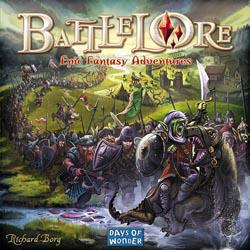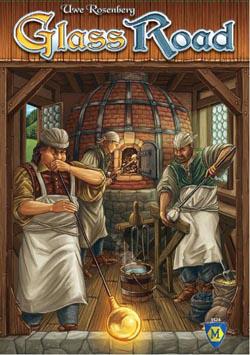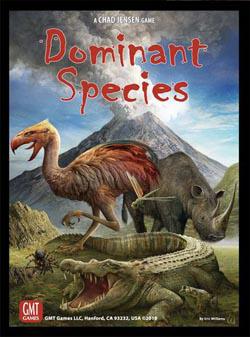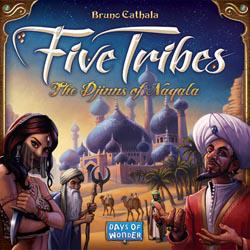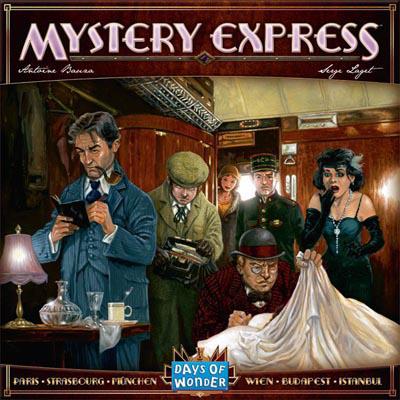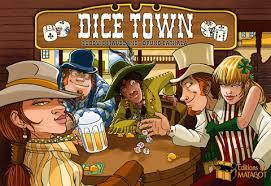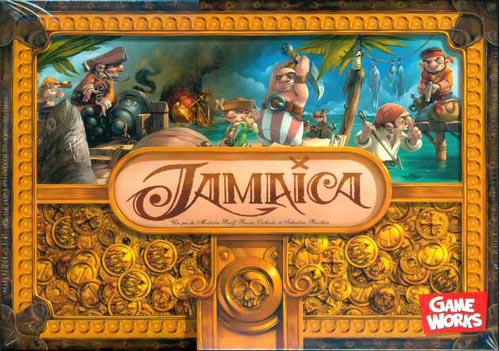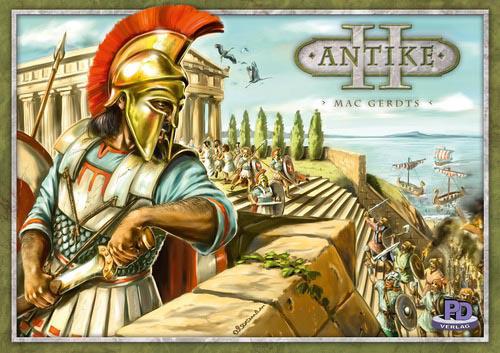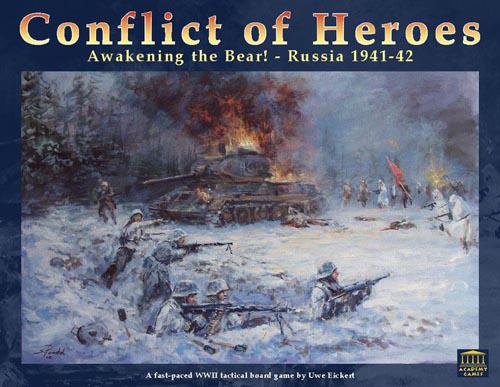Content:
HFG's Top Ten Abstract Strategy games:
This is my list of the House of Fun and Games' top ten abstract strategy games for two players. I like
these games but almost never get the chance to play them as part of HFG activities. By "abstract
strategy" I mean that the players have perfect and complete information and the game has no luck
element, no card or tile drawing. The list includes a few games that can be played with more than two
players, but that are more enjoyable with only two IMHO.
- Chess. Chess is a beautiful game. There is true elegance in the unfolding of combinations, the
development of a mating attack, or the solution to chess problems. And of course it's a classic.
- GIPF Project. I am amazed that a single designer was able to create so many beautiful, simple, yet reasonably deep games that can be played within a half hour. If I was to consider each game as a single entry, together they would fill almost the whole list and there would be no space left for other worthy games. So I cheat and enter them as a group. My favourites are Zertz, Dvonn, Tzaar, Yinsh, and Gipf. Punct is good too and resembles Hex below. Tamsk has a timer element, which I don't like, and which detracts from the others (for that reason I think the designer has removed Tamsk from the official list of Gipf Project games.)
- Pente. If you don't count chess boards, the oldest acquisition I made as a board game player aficionado and still have at the HFG is a nice, big Pente board with bags of coloured stones. Another deceptively simple game that plays in a half-hour or less. I actually once bought a book about this game, as if it was chess.
- Hive. This game speaks to me: A zoological theme, nice and heavy bakelite hexagonal pieces, and an original set of movement rules that actually prompted me to spend time studying possible openings.
- Hey That's my Fish. Again, a nice zoological theme, and absorbing possibilities in a game that plays in 20 minutes or so.
- Laser Khet 2.0. A neat game that deserves to be better known. A little bit like chess with lasers and mirrors. Nerdy!
- Hex and Twixt. These two games are equally worthy variations of the same theme: be the first one to link two opposite sides of the board. Both are best played by drawing Xs and Os on grids printed on paper and that is what the HFG has.
- Nine Men's Morris. Also called Merelles, this is a classic game, fairly easy to master. I also have the game Kensington which is similar to Nine Men's Morris except that it is played on a bigger board with more numerous connections.
- Othello Another classic, with fairy straightforward strategy.
- Hnefatafl A little-known Scandinavian game going back to the days of the Vikings (they have found playing pieces in Viking archaeological sites). It's like an asymmetrical game of chess where an army of peasants try to corner a king and his few defenders.
Honourable mentions: I have played Go once but I did not become a fan and I do not own a board; it is nevertheless recognized as one of the best abstract strategy games ever and I'd be remiss not to at least mention it. Checkers is another classic game, and I have a board on the back side of my croquenole table in the basement; however I have not played the game since I was a kid.
I also own two little-known games from the 80s, Give & Take and Colorloc, which I have not played in a long while. I have played Through the Desert many times as a three-player game and I get the feeling it would also be a very good abstract strategy game for two players.
And I cannot decide whether Patchwork and Azul belong to this list: there is perfect information but the choice of available tiles varies from player to player or from one turn to the next./p>
Start of page 
HFG's Top Ten Animal games:
Here is my list of the House of Fun and Games' Top Ten games featuring animals. The criteria were how central to the game theme the animals are, and how good the game is, the latter being partly determined by how often the game saw table time over the years, and partly by my own subjective evaluation. Folklore species did not count (bye bye dragons, unicorns, giant pigs, werewolves, etc.)
- Evolution. Herbivores, carnivores, parasites ... scavengers, pack hunters, long neck browsers ... horns, hard shells, warning calls ... climbers, burrowers, hibernators: you build your own species in this very thematic game. The game Dominant Species also has a strong ecological and evolutionary theme, but it has not been played at the HFG yet (as of March 2018).
- Hey, That's my Fish Good artwork, true biology (penguins eating fish), fun strategy game for two players.
- Hive. Another strategy two-player game, so I'm revealing my tastes here. Nice heavy Bakelite six-sided tiles display realistic-looking bees, ants, grasshoppers, spiders and beetles.
- Zooloretto You're building a zoo. This is the board version of the card game Coloretto, where the animal theme is not as strong (you tend to look at the colours of the card rather than the animals they show).
- O Zoo le Mio You're building a zoo again. And an aquarium too.
- Through the desert You're putting together long caravans with little plastic camels. Another strategy game I like. Speaking of camels, I could have made a top five list only with them, as the very good games Five Tribes, Camel Up, Yspahan, and Jaipur also feature camel figurines or cards.
- Snorta Not everyone likes this childish party game, but the animal theme is very strong. Up to ten different species, mostly domestic. Not only are the animal figurines good-looking, but you have to make animal sounds!
- Rattus I bought this game not knowing anything about it, just because I liked the name. I didn't regret it, it's a good area influence game, ideally for three players. The theme is rats spreading the plague in Europe. Fun! There are also rats spreading plague in the good game Notre Dame, but they are not very central to gameplay.
- Myrmes Another game I bought just for the theme. Your ant colony has workers that you send to the surface to gather resources, or they can stay in to raise more workers.
- Mondo Again, a strong animal theme. You build an island with tiles, and the tiles showing animals (many different exotic species) give you extra points. It's a game with a timer, however, and I've never been too keen on games with a "rush" component. I prefer Isle of Skye, where you also lay down tiles (and can take your time doing it), and the ones with sheep or ox give you extra points.
Honorable mention: In Killer Bunnies, your rabbits try to eat the magic carrot while avoiding being whacked or starved by the other players; there are Gleeful bunnies, Trojan bunnies, Timid bunnies, Sinister bunnies, Lumbering bunnies, Congenial bunnies, Holographic bunnies, Free agent bunnies, and Bunnies in black. They do seem to have amazing reproduction potential.
Honorable mentions again: A number of games have domestic animals as one of the resources to be acquired, like sheep in Settlers of Catan; cattle, pigs and chickens in Castles of Burgundy; sheep and cattle in Agricola; ox and horses in Village; and pigs in Trollhalla. You can also collect various wild insular species in La Isla.
Also worth pointing out: Odin's Ravens has wooden score markers in the shape of ravens. There is a hungry panda in Takenoko. You can buy lions and horses to produce a magnificent spectacle in Colosseum. The horse and chariot figurines in Ave Caesar are rather well made. Whales and shark will attack you while you flee a sinking island in Survive. Other nasties, such as spiders and snakes, will make you quit your expedition in Incan Gold. And finally, some sheep are bound to drown, unfortunately, in Turn the Tide.
Start of page 
HFG's Top Ten Castles and Palaces games:
Here is my list of the House of Fun and Games' Top Ten games featuring castles or palaces. The criteria were how central to the game theme these buildings are, and how good the game is, the latter being partly determined by how often the game saw table time over the years, and partly by my own subjective evaluation. This is an exceptionally strong list: all the games are excellent.
- Citadels. There's a king, and all the yellow-marked cards show castles or adjoining buildings. One of the oldest games at the HFG, it has been played quite a lot, and I do like it.
- Alhambra. Spiel des Jahres winner for 2003. The original Alhambra was a walled garden that included many palatial buildings, which the white tiles depict. Another one of the oldest and widely-played games at the HFG. And it motivates you to visit the original in Granada, Andalucia :-)
- Torres. Spiel des Jahres winner for 2000. From the game's introduction: "The now elderly king must choose a successor from among his sons. He has charged them with rebuilding his castles and promised the throne to the one who can rebuild the tallest and largest castles." The game comes with little crenellated blocks that you pile up to build the castles.
- Arkadia. From the game's introduction: "Widely-travelled settlers have laid the foundation stone for the city of Arkadia. In addition to several other buildings, they want to construct a magnificent castle on a hill." More little crenellated blocks.
- El Grande. From the game's introduction: "Spain, 15th century ... all regions wanted to develop their own power and influence. To this end, the Castles (Castillos) played an important role". The game comes with a castle tower that you assemble. Probably the best Area Influence game out there.
- Castles of Burgundy. From the game's introduction: "Players take on the role of 15th century princes in Burgundy." Their estate includes a castle and its grounds, depicted by the dark green tiles.
- Cleopatra and the Society of Architects. From the game's introduction: "Cleopatra has offered a prize to the architect who can design the finest palace." The game comes with lots of large plastic pieces of the parts that would constitute an Egyptian palace.
- Taj Mahal. From the game's introduction: "Control of India at the beginning of the 18th century is up for grabs ... The most successful player is the one who establishes the most magnificent palaces and has the most power in the end." There are lots of Taj Mahal palace figurines.
- Castles of Mad King Ludwig. You build a fairy-tale castle with different rooms, the order of which will determine how many points you will get.
- Caylus. From the game's introduction: "1289. To strengthen the borders of the Kingdom of France, King Philip the Fair decided to have a new castle built". Good game, on the heavy side.
Honourable Mentions: In Shadows over Camelot, one of the characters is the King, of course, and the game board shows his round table surrounded by walls (presumably castle walls) outside of which evil catapults gather. In Isle of Skye (Spiel des Jahres winner 2016), your starting tile shows a castle, while in Kingdomino you actually install a small cardboard castle on your starting tile. Building castles (represented by tokens) gives you lots of points in Shogun, while in El Caballero you can buy a Castillo tile to offer protection to your territories.
Also worth mentioning: Some very good games feature buildings that may not quite qualify as castles or palaces. In Tikal (Spiel des Jahres winner for 1999), you build Mayan pyramids with stacked-up tiles. Attika has many tiles showing various ancient Greek buildings, all of them civic except for a fortress and a tower. 7Wonders (Spiel des Jahres winner 2011) has lots of cards showing ancient civic buildings but there's only one card showing a palace. In the Year of the Dragon features Chinese pagodas in which you house the various members of your royal court. Both Taluva and Antike II have temple figurines. Carcassonne has walled cities, but no obvious castles in them. And in Manhattan, you build skyscrapers where captains (but not kings) of industry may reside.
Start of page 
HFG's Top Ten Desert games:
Here is my list of the House of Fun and Games' Top Ten games featuring deserts as a theme. The criteria were how central to the game theme the desert is, and how good the game is, the latter being partly determined by how often the game saw table time over the years, and partly by my own subjective evaluation.
- Through the desert. I really like this game (as I do most games created by Reiner Knizia) and with a title like that, there's no denying the desert theme. Plus, the game is packed with cute little plastic camels to make caravans!
- Kingdom builder. Many games include desert as one of their many landscape tiles (it is a convenient landscape to be represented by the colour yellow). My favorite by far is Kingdom Builder, but let's also mention Settlers of Catan, KingDomino, Cryptid, and Mondo.
- Lost Cities. Admittedly, the desert theme is small (only the yellow cards are involved, showing sandy scenes and representing an expedition to the desert) but of all the two-player games the HFG has, this is probably the one that's been played the most.
- Elfenland. A big part of the map is occupied by a desert, which dragons can travel through easily (they like the heat!)
- Archaeology. You find artefacts in the desert, and sandstorms can catch you unawares!
- Mykerinos. More artefact-finding in the desert.
- Ra. Popular game, but the desert theme is small, only in the form of catastrophic drought tiles that negate your flooded Nile tiles and turn them into a desert.
- Santiago. If you don't irrigate your plantations, they turn to desert.
- Yspahan. "Caravans loaded with goods and jewels set out for the desert", the rulebook says. Indeed, the game features souks and camels. Played only once, however.
- Tobago. I'm cheating here. There is no desert on the island, just beaches. Aren't beaches like tiny deserts?
Start of page 
HFG's Top Ten dice games:
Here is my list of the House of Fun and Games' Top Ten games featuring dice. The criteria were how central to the game mechanism the dice are, and how good the game is, the latter being partly determined by how often the game saw table time over the years, and partly by my own subjective evaluation.
- Perudo. Always fun and lots of dice throwing. By far the HFG's most played game, of any kind (more than 100 times).
- Risk. A lot of games resolve combat with dice (e.g. Fire & Axe, Axis & Allies, Pirate's Cove, Smallworld, Root) and I decided to choose only one to stand for all of them. Risk is the ultimate dicefest, be it in its classic form or in one of its reincarnation (2010, Mission, etc.)
- Ra the dice game. A worthy improvement over the auction mechanism of the original version of Ra, which was already a classic game. (This comment shows that I don't like auctions.)
- Dice Town. You know you're dealing with a true dice game when "Dice" is in the game's name and the game comes equipped with little cups.
- Settlers of Catan. A well-known gateway game in which luck, in the form of the two dices thrown at every turn, plays a greater role than many people realize.
- Stone Age. Lots of dice throwing, but luck should even out in the end, letting careful planning and strategy shine.
- Colosseum. The movement of the emperor and senators around the track is an important part of every win, and is determined by the throw of one dice, or two if you're smart enough to invest in an emperor's lodge.
- Quarriors. Any game that comes with thousands of tiny dice has to be on this list. (OK, hundreds, not thousands.)
- King of Tokyo. What happens on your turn depends on the dice you roll and decide to keep. Chance plays a big role in this game.
- Castles of Burgundy. Two dice thrown at each turn will restrict where you can carry out your actions. Not that big of a role for the dice, otherwise this very good game would rank higher in this list.
Honourable mentions: In Camel Up, each camel advances according to the roll of a dice, numbered 1 to 3. In Mystery of the Abbey, various cards require that dice be rolled to see which players are affected by the card's effect; it doesn't happen that often, though. In Killer Bunnies, some actions are influenced by the roll of a 20-sided dice. In Cleopatra and the Society of Architects, dice are rolled after every purchase, those showing a symbol are set aside, and an auction takes place when all six dice finally show the symbol; however, such an auction almost never happens more than once a game.
Start of page 
HFG's Top Ten Dragon games:
Here is my list of the House of Fun and Games' Top Ten games featuring dragons. The criteria were how central to the game theme the dragons are, and how good the game is, the latter being partly determined by how often the game saw table time over the years, and partly by my own subjective evaluation.
- Fist of Dragonstones. There's a two-headed dragon, and ancient dragon, a yellow dragon, a blue dragon, a red dragon, and even a rainbow dragon (not that there's anything wrong with that).
- Carcassonne: The Princess and the Dragon. There's a wooden dragon that you place on any tile that shows the head of a dragon, and it can fly from tile to tile to attack stuff. This ranks high mainly on the strength of Carcassonne's base game, but this variant is fun nonetheless.
- Blue Moon. There are three good-looking plastic figurines of dragons, which you can attract to your fights to strengthen your side. This is the only CCG* at the HFG (don't you love acronyms?)
- Fairy Tale. There's a sky-dance dragon, a silver dragon, a bronze dragon, and a baby dragon! This is a good card game that has recently been supplanted by 7 Wonders, whose play mechanism is very similar.
- Quarriors. Many different warriors can be chosen, but the dragons are by far the strongest (and therefore, the most expensive to acquire - or should I say, a Quarrior?).
- Shadows over Camelot. The Dragon's Quest is the hardest of all quests (dragons are hard to kill), but it only appears after the Lancelot's Quest has been completed, so you don't always see it, and when it appears you should stay away from it.
- Elfenland. One of the modes of transport is dragons. They fly very easily in the mountains and the desert, but not in the forests, where their wings get mangled and entangled in tree branches.
- Smallworld. One of the special powers is Dragon Master, with its corresponding dragon marker which can move from region to region, making the region where it resides immune to attack. Forget those silly legends where dragons are killed: nobody can kill a dragon.
- Beowulf. Speaking of silly legends, anyone who knows this Nordic one will not be surprised to see two stations called Dragon's Rampage and Dragon Battle towards the end of the game.
- Nexus. A rubium dragon can breathe plasma into an adjacent territory. Very unpleasant.
Worth mentioning: Two of the six tiles In Barbarossa are Dragon tiles, and it hurts when you land on them (everybody but you gains a point) but otherwise there are no links to dragon life. Survive has very destructive sea serpents; can they count as dragons? In Tsuro, the artwork features a beautiful Asian dragon, and the dragon tile is used to indicate who will first pick up cards when they become available. Also, you'd think dragons would play a central role in a game titled In the Year of the Dragon, but in fact they only serve as player identifiers, in the shape of dragon cut-outs on stands. Finally, In the game Lord of the Rings, one of the characters is a flying Nazgul, but Nazguls are not truly dragons, right?
Start of page 
HFG's Top Ten Halloween games:
In late October I always wonder what thematic games could be played on Halloween week. I have finally made a list. Here are the HFG's top ten games with scary stuff, ranked according to how closely they correspond to standard Halloween themes, and how well the theme fits with gameplay.
- Betrayal in House on the Hill. You uncover rooms in a spooky haunted house until zombies appear, at which point you must reach the exit door before they get you.
- Fearsome Floors. Frankenstein (represented by an actual figurine) walks around the board and you must avoid him while crossing a stone-paved hall, all the while slipping on puddles of blood.
- Dracula. A two-player card game in which you try to find the location of Dracula's coffin, all the while trying to escape the clutches of his fellow vampires.
- Werewolves. In this party game for big groups of players, you try to identify who are the secret werewolves before they kill all the rest of you villagers.
- Witches' Brew. You use wolf blood, snake venom, and herb juice (for health) to brew potions in various cauldrons, which you collect for points.
- Above and Below. Scary scenarios, all taking place in dark caves with mysterious voices, glowing objects, or creepy crawlers, are read to you to form the backdrop for risky decisions you have to make if you want to get any points.
- Smallworld. Many races fight each other in this wargame, and some are rather scary: ghouls, skeletons, orcs, ratmen, trolls, sorcerers, and wizards, among others.
- Incan Gold. In this push-your-luck game, mummies, giant spiders, and hissing snakes will try to discourage you from staying in expeditions that could net you treasures ... or death.
- Claustrophobia. The action takes place in the catacombs of New Jerusalem, involving conflict between your redeemer and warriors versus your opponent's troglodytes and demons.
- Cryptid. The box cover shows a creepy creature (the cryptid) next to a creepy house under a creepy full moon ... but the game itself has no scary theme whatsoever.
Honourable mentions: Fury of Dracula also features the famous vampire, but he is hidden (the goal is to find him). Shadow Hunters' artwork is spooky, but the spookiness tends to disappear in the game itself. Skulls and Roses has coasters with skulls on them, and each player is leading a biker gang, and bikers are scary, right?
Start of page 
HFG's Top Ten Island games:
Many games require that players choose to occupy or play on different parts of the board. A convenient thematic way to represent these various parts is by calling them islands. Here is my list of the House of Fun and Games' Top Ten games featuring islands. The whimsical criterion for ranking was how many islands are present on the board, the more the better. Ties were broken by giving priority to islands that were named for actual places.
- Amerigo. With 4 players the board is made up of 16 big tiles. They are placed more or less at random, forming a number of islands meant to represent a Central American archipelago. The number of islands varies according to tile placement, but it's usually about a dozen.
- Kahuna. From the game's introduction: "For this competition, two priests have chosen an uninhabited archipelago with 12 small islands. They have agreed to use their magical powers to build bridges linking the islands." A two-player game.
- Vikings. From the game's introduction: "As the leaders of powerful Viking tribes, the players set out to discover the islands seen off the coast of the mainland. Craftsmen, nobles and warriors will be stationed on these islands to claim and defend the land." There are 76 island tiles to choose from, but it is impossible to form more than 10 islands with them.
- Murano. From the game's introduction: "Various and esteemed personalities visit the small islands of Murano in search of treasure to acquire." Seven islands on the board, representing fairly faithfully the Murano archipelago. Being a glass art collector who has actually been to Murano, I do like the theme of this game (and the game itself too).
- Trollhalla. From the game's introduction: "You join forces with your fellow trolls to sail the seas in search of islands filled with pillage and plunder." Seven imaginary islands linked by shipping lanes.
- Pirate's Cove. Seven islands again, but 6 of them are only seen in half. There's no actual sailing between them; you just pick which one you want your pirate ship to be beamed to.
- Bora Bora. From the game's introduction: "Stake your fortunes in the mysterious island world of Bora Bora. Journey across islands, building huts, discovering fishing grounds and collecting shells." Five islands, but I don't think they replicate the actual Bora Bora.
- Tobago. From the game's introduction: "After years of searching you have finally found her: Tobago, the island of forgotten treasures." One island (the board). Tobago is an actual place. Confusingly, the game uses several statues that resemble the moai of another island, Easter.
- Finca. One island (the board), meant to represent the island of Mallorca, from which you harvest a variety of Mediterranean fruits in a donkey cart.
- La Isla. From the game's introduction: "Explore the mysterious island of La Isla, and hunt for long-thought-extinct animals." One island (the board). "La Isla" is not really an actual place, but it means "The Island" in Spanish, which has to count for something in a list about islands.
Start of page 
HFG's Top Ten Map and Territory games:
Here is my list of the House of Fun and Games' Top Ten games featuring maps and territories. The "territory" component is there to prevent overlap with the Road and Network list, where the games also have maps, but mostly with cities that need to be linked. Here the maps have to show territories, provinces, or multiple countries without cities. The main criterion for the ranking is how realistic the map and territories are relative to the actual places; game quality only serves to break ties.
- Samurai. Realistic rendering of Japan's three main islands, and a very good game, liked by most everyone at the HFG. A very good area influence game (most games in this list have area influence as their play mechanism).
- El Grande. Realistic map of Spain and its provinces in the 15th century. I like the cardboard castle in which you drop some of your cabarellos as reserves for later.
- Australia. Guess what country.... A plane figurine flies from state to state, and a house rule says you have to make the sound of a flying plane when moving the figurine.
- Axis & Allies. A map of the whole world, no less. This game is the best representative for various other games of world domination, such as Risk, Attack, and Fire & Axe.
- Antike II. A map of Europe and the Mediterranean region in the days of the Roman Empire. There's a similar map and theme in End of the Triumvirate, but Antike II is a much better game.
- Condottiere. A map of Italy and its states in medieval times. You try to conquer a majority of the states with your men-at-arms (condottiere).
- London. A map of London and its boroughs, just to show that maps don't always have to be at the national level. Similarly, Gangster has a map of Chicago, but it is too simplified.
- Rattus. A map of Europe. You try to dominate its various regions while avoiding a spreading plague.
- Shogun. A map of Central Japan, with numerous provinces whose names are hard to remember.
- Finca. A map of the island of Mallorca. You deliver fruits to its various regions.
Honorable mentions: Merchants & Marauders has a very nice map of the Caribbean area, but as of October 2018 this game has not been played yet. The otherwise excellent game Scythe has a map that purports to be Eurasia, based on the names of the factions involved, but it doesn't look like Eurasia at all.
Start of page 
HFG's Top Ten Murder games:
Here is my list of the House of Fun and Games' Top Ten games of murder. The criteria were how central to the game theme murder is, and how good the game is, the latter being partly determined by how often the game saw table time over the years, and partly by my own subjective evaluation. I decided not to consider war as murder, so war-themed games were out. The killing had to be personal!
- Cash & Guns. Any game in which you physically hold a (styrofoam) handgun to your neighbour's head has got to rank first on the list.
- Bang! You're trying to kill the sheriff, and that's murder in my book, pardner.
- Killer Bunnies. Some may object that killing animals is not murder, but you've got to admire the incredibly diverse arsenal that is used to exterminate the furry little critters in this crazy game.
- Kill Dr Lucky. The game that everyone (but me) loves to hate. There is no denying how strong the murder theme is, and the descriptions (on the failure cards) of how Dr Lucky temporarily escapes his fate are fun.
- Citadels. That's my favorite game of the list, so it's got to be at least in the top five. The assassin is only one of eight different roles, however.
- Gangster. It's the 1920s and you're trying to control Chicago. One of your options is to liquidate competing gangsters, stow their bodies in the trunk of your car, drive to the harbour, and dump them in Lake Michigan.
- Mystery of the Abbey. The list is rounded off with a quartet of games in which you need to unmask a mur-didley-urdler. The one with the most ambiance is definitely Mystery of the Abbey. It's also the one that was played most often.
- Mr Jack. A fun game for two people in which one player tries to find who Jack the Ripper is, while the other player tries to keep the little creep hidden.
- Scotland Yard. This time, you're trying to find where Jack the Ripper is. One player takes the role of Jack, and the other players collaborate to try to corner him.
- Mystery Express. As in Clue (the granddaddy of all murder games; my copy is in the basement), you deduce who the murderer is by a process of elimination.
Start of page 
HFG's Top Ten Roads/Networks games:
Here is my list of the House of Fun and Games' Top Ten games featuring roads or networks as a theme. The criteria were how central to the game theme the roads/networks were, and how good the game is, the latter being partly determined by how often the game saw table time over the years, and partly by my own subjective evaluation.
- Ticket to Ride. Possibly one of my Top Ten all-around games at the HFG (and the Spiel des Jahres 2004 winner). It comes in two versions (North America and Europe) and features a neat house rule (everyone must imitate the ding-ding-ding sound of a railroad crossing bell when three locomotives show and the five draw cards must be changed). The railroad theme is very strong.
- Tsuro. Really fun game that can be taught in two minutes, plays quickly (about 15 minutes), and can accommodate up to 8 players. The material is simple: tiles that show paths, plus some stones.
- TransEuropa. Railroad connections again. Well, they could be ordinary roads, but the rulebook says railroad (this is Europe, after all) and the score markers are plastic locomotives. Another fun game that is easy to teach (I'm usually the one doing the teaching, so this is an important criterion!) and it plays fast.
- Thurn and Taxis. What kind of list is this, the top games with a name that starts with T? This 2006 Spiel des Jahres winner is an excellent game for three players, in which you build a postal system of connections between European cities, the longer the better.
- Power Grid. This time, the network is of power lines between cities. Very good game, a bit on the heavy side. The biologist in me likes the possibility of buying wind turbines instead of coal-burning power plants (though in my experience you win more easily with the coal).
- Karuba. A race to connect four explorers with four temples hidden in the jungle. Another good game that is easy to teach and relatively fast to play.
- Pünct. This game is part of the GIPF series. It stands as a representative for all those other games, such as Hex and Twixt, in which you aim to be the first player to connect two opposing edges of the board. I love those games, but they're only for two players and they have a chessy quality to them, which is not for everyone.
- Elfenland. Roads travelled by elfcycles, troll carts, rafts, magic clouds, giant pigs, dragons, and unicorns (including my favourite, Annabelle). Another Spiel des Jahres winner (1998, this time).
- Age of Steam. More railroad connections between cities. A gamer's game, rather unforgiving if you don't watch your money closely.
- Relic Runners. You connect home camp to various archaeological sites in the jungle and then uncover their treasures.
Honorable mentions: Scotland Yard has an extensive network of streets and subway lines in London along which a criminal (one of the players) secretly roams, and you're trying to catch him. Concordia and Oltre Mare have maps of the Mediterranean area with links already penciled in between cities to delineate possible movements. Taj Mahal has the same between cities on a map of India, and these connections influence the scoring. Labyrinth Master is a two-player game in which you push rows or files of tiles with an additional tile to create a path that allows you to reach treasures. And speaking of two-player games, don't mix up Karuba, above, with Kahuna, a two-player game in which you try to control as many islands as possible by linking them with a network of bridges.
Also worth mentioning: In Settlers of Catan, you get points for the longest road. Roads are not that important in Carcassonne, but they can score you a few points. And roads or paths limit how you can lay tiles in Isle of Skye and O Zoo le Mio.
Start of page 
HFG's Top Ten Pretty Girl games:
Board games are played mostly by men, so it's no surprise some game publishers include artwork with pretty girls. Here is my list of the House of Fun and Games' Top Ten games featuring pretty girls. As opposed to other HFG Top Ten lists where the quality of the playing experience was part of the criteria for ranking, here the only criterion is how good-looking and sexy the girls are.
- Shadow Hunters. The characters Allie, Agnes, and Fu-ka are drawn in the Japanese style of Anime/Manga, which means they are young, generously endowed, and scantily clad. What's not to like? The characters Catherine, Ellen and Emi are more demure, but still very cute.
- Cleopatra and the Society of Architects. The two Courtesan cards will cost you 1 corruption amulet. Everybody knows it's for the dirty thoughts you'll have when looking at those cards.
- Blue Moon. I used to play this CCG game with Steve Richardson back in the days, and we both agreed that picking the Mimix card deck was a dangerous strategy because you could spend most of your time staring at the cards rather than concentrating on the game. Each card shows a topless female fighter. They look mean, but topless has got to rank high, no?
- Flash Point. Paramedic! Paramedic! This man needs mouth-to-mouth resuscitation!
- Nuns on the run. The Abbess is old and mean, the nuns are innocent, but my God, the Prioress! Catch me in the garden underneath the tree, please! The marker card shows her front and back, Heaven be praised.
- The Red Dragon Inn. Two of the card decks, Deirdre the Priestess and Fiona the Volatile, feature large cups (not only the drinking kind), and comely smiles that hint at those rooms upstairs.
- Cargo Noir. Each player board shows a different gang of criminals and they all include a nubile young woman (in the case of the Italian Mafia lot, however, you can see by the conservative way she dresses that she's destined to become a matrone).
- Cash and Guns. The character Miss Lotus has Asian good looks and a neckline that plunges below her belly button. I could never bring myself to shoot at her.
- Smallworld. The Amazon race is more than any man can handle, and they're all in bikinis.
- Love Letter. Like the rulebook says, you want Princess Anette to "speak kindly of you at breakfast", but nobody would mind courting Countess Wilhelmina as well.
Honorable mention: The female victims in Dracula are too old to be called girls, but they're all in night gowns, while the female vampires are OK if you can look past their cold appearance. Miss Stealthy in the game Mr. Jack looks mean, but she's a redhead! And speaking of murder mysteries, I confess I've had a crush on Miss Scarlet, from the game Clue, since the age of 10.
Also worth pointing out: The character Candy in Mystery Express cannot possibly be the culprit; the Elven warriors, Fairy queens, Mischievous fairies, Spirits of the spring, Bards, and Dark angels in the game Fairy Tale bear further examination; and Guinevere, Morgan, Vivian, and the Lady of the Lake in Shadows over Camelot are rather pretty, in a medieval kind of way.
Start of page 
HFG's Top Ten Psychology games:
In some games it is important to bluff, lie, deceive, or read other people's mind. I call them psychology games. Many of them are party games amenable to high numbers of players and they have been played quite a few times at the HFG or at friend's places over the years. Time to list them. Here is my list of the House of Fun and Games' Top Ten games featuring psychology, mostly based on my own personal liking.
- Perudo. More than 100 games of Perudo played at the HFG. Lots of games with theatrical performances, looking more assured or more tentative than one really is, lying about the numbers you have, trying to convince the neighbour to your right to call dudo. Not for nothing is it also called Liar's Dice. Great fun!
- Skull and Roses. Who did and who did not place a skull on top of his pile of coasters? Do people really have a greater tendency to place a skull right after someone has won a rose? When someone calls a number, does it guarantee that he has not placed a skull in his pile? Or is he laying a trap?
- Secret Hitler. This game and the next five all have one thing in common: they have one or several secret traitors who will try hard to look or act innocent. There is not much to differentiate those games in my opinion. I start with Secret Hitler because it's the one that generates the liveliest discussions as to who the Nazis might be, or how to select the teams so as to deduce who the Nazis are.
- Resistance. Fairly similar to Secret Hitler, also with a WWII theme.
- Werewolves. Great party game, takes only a few minutes to teach, requires only a few pieces of paper, always appreciated by all. When you die you are out of the game, but then you get to watch those dastardly werewolves talk their way to victory, when they can. They sure look smug when they happen to win. This game is especially good if its master of ceremony is theatrical, and if the players get into it and let many accusations fly.
- Saboteur. If you're a saboteur, you often want to play a useless card and pretend you had no choice. You should also play cards that prevent other players from playing, pretending you are a good guy convinced you are blocking a bad guy. The theme is miners digging tunnels to reach a treasure. Part of the fun for the saboteurs is to lie about where the treasure is.
- Bang. Good only with a high number of players. A sheriff and his deputies are after secret outlaws. Once you think you know who the outlaws are, you try to shoot them, if you have the guns for it. If you're shot, you can spend beer cards to regain life!
- Shadows over Camelot. This is a cooperative game, but often (not always, and nobody knows when, which is fun) one of the players is a traitor who will subtly subvert the gameplay, until he unmasks himself with a cackling demented laugh, to openly screw things up from then on.
- Shadow Hunters. Some players are hunters who win if they kill all the shadows, some players are shadows who win if they kill all the hunters, and some players are neutrals who win if they don't get killed in the crossfire. The thing is, nobody knows what role the other players have. There are ways to deduce it, and once you know who your enemies are you want to be subtle in the ways you hurt them, so that they won't be sure you are their enemy.
- Spyfall. This is a deduction game based in great part on what the other players are saying. Only one of the players (the spy) doesn't know in what kind of location everybody is, and nobody knows who that spy is. Players ask questions about the location to other players, trying to see if those other players know the location, so as to eventually expose the spy. But you cannot be too obvious about it, because the spy wins if he guesses what the location is based on the answers he hears. The psychology is mostly on the part of the spy, who must fake being self-assured when he's the one who must answer questions (about a place he doesn't know, remember).
Start of page 
HFG's Top Ten Ship games:
Here is my list of the House of Fun and Games' Top Ten games featuring ships. The criteria were how central to the game theme the ships are, and how good the game is, the latter being partly determined by how often the game saw table time over the years, and partly by my own subjective evaluation.
- Puerto Rico. Consistently ranked high on boardgamegeek.com, and for good reasons. You need to ship the goods your plantations produce to the Old World, and there are only three boats. You have to be careful how you fill them up, otherwise you get screwed.
- Axis and Allies. Any game that has figurines of boats (in this case, aircraft carriers, battleships, destroyers, submarines, and transports) has to be ranked high. The boats are crucial to the battle tactics in this classic wargame. The game is addictive but suffers from length (you can play 5 h and still it's not over - you don't notice those five hours go by, though). A similar crucial role for fighting flotillas, but in more ancient times, can be found in Antike II
- Fire & Axe. Again, nice boat figurines, Viking longships in this case. You have to fill your longship with the right mix of goods and warriors before you sail in search of trading opportunities and targets for raiding and pillaging. Good mix of strategy and luck.
- Medici. Your player board is a ship with only five cargo holds. Fill it with as many of the same kind of goods as you can. If you don't like the goods on offer, dump them in the harbour. Very good game for a higher number of players (up to 6).
- Pirate's Cove. More boat figurines, pirate ships now. You need to equip it with the right combination of sail, cannon, sailors, and hold capacity. Then you send your ship to islands in search of plunder.
- Cargo Noir. Send your 3-5 boat figurines to various ports to smuggle goods.
- Jamaica. A race between pirate ships around an island. Your ship can only hold so much food, money, and armament. You will need it all.
- Amerigo. With boat figurines you sail from island to island, but most of the action takes place on land.
- Samurai. Ship tiles can only be played on the water hexes (makes sense) and they are useful wilds. Excellent game, but those boat tiles are not that central to success.
- Trollhalla. More boat filling and movement from island to island. Speaking of boat filling, you find that too in Imhotep and in Ra the Dice Game where the boats are barges floating down the Nile, as well as Survive where boats take people (yours ideally, but there can be stowaways) off a sinking island.
Honourable mention: Save Dr Lucky has a neat theme: move from room to room in a cruise ship to prevent Dr Lucky from being murdered; but beware: the ship is sinking and whole levels disappear one by one throughout the game. Murano has gondolas that park themselves at various islands, as well as Venitian boat figurines that serve as markers on the action track. You'll find very nice sailing ship figurines in Merchants & Marauders as well as Oltre Mare, two games that have not been played yet at the HFG (as of October 2018). A rudimentary boat figurine goes from landing to landing to determine action order in Mangrovia, another unplayed game languishing on the shelf.
Also worth mentioning: Dominion: Seaside is an expansion that centers on maritime things, so there are boat cards of course. There are also ship cards in Goa, and ship tiles in El Cabarello, Castles of Burgundy, and Vikings. Canoes are headed for disaster in Niagara. In the cooperative game Red November you need to fix various problems inside a sinking submarine. And speaking of submarines, let's not forget Deep Sea Adventure, a fun push-your-luck game (how soon should you swim back to the sub?).
Start of page 
HFG's Top Ten Tile-laying games:
This is the House of Fun and Games' top ten list of games that use tile-laying as a mechanism. The criteria for ranking were how popular the game has been over the years, and whether the tile-laying progressively builds up a map, over tile-laying as a way to restrict what you can buy (i.e. you can only get stuff represented by tiles that you can fit on your board).
- Carcassonne. A classic, one of the first games acquired by the HFG. The map of fields and roads and cities expands as you lay square tiles, ideally scoring points each time.
- Alhambra. You acquire square tiles that you lay down so as to form a garden that is ever expanding, though always bound by a wall. Another classic.
- Blokus. You lay differently-shaped tiles where you can on a big board, trying to get rid of all your tiles. The final colourful patterns are always rather pretty. A good 4-player game.
- Tigris and Euphrates. Square tiles are laid on a map of Mesopotamia to create expanding kingdoms that can fight with one another when they finally come into contact. A classic Reiner Knizia game, very enjoyable.
- Taluva. Star-shaped tile are laid to form an expanding island, with the neat twist that you can lay tiles on top of others to create relief. Realistically, these terrain uprisings can only take place where volcanoes disgorge lava.
- Attika. You can lay big tiles to expand the original board, and then you lay smaller tiles on hexes to try to link two end-points (shrines). A good game for three players, in which the endings are always tight between at least two of the players. Cretaed by the same designer as Taluva above.
- Kingdomino. Domino-like tiles are placed on a 5x5 grid so as to form coloured areas that are as big as possible. I find that O Zoo le Mio has a similar feel, also with domino-like tiles, but it has an auction mechanism to acquire each tile, and I've never been keen on auctions.
- Princes of Florence. You buy tiles showing various landscapes and various buildings, of various shapes, but they have to fit on the grid of your player board. A good game for 5 players, with a point-salad flavour.
- Patchwork. A two-player game in which you buy tiles of various shapes that you freely place on a grid, if it fits. One of the ways to score points is to be the first one to fill a 7x7 square on your grid.
- Amerigo. You sail to many differently-shaped islands and you try to fit various tiles onto these islands. Played only twice as of October 2018 but well worth seeing more table time.
Honourable mentions: The following three games are just as good as the other ten. In Arkadia, you place variously shaped building tiles on a grid, and then you place meeples around those buildings to own them. In Castles of Mad King Ludwig you expand your castle by adding rooms in the shape of tiles of various size, with entertaining and realistic names for the rooms. In Tikal, the playing board becomes progressively more accessible as hexagonal tiles are laid down.
Also worth mentioning: Takenoko has an expanding terrain of hexagonal tiles, but most of the action takes place on the tiles themselves and the resulting map is not that big. In Agricola, you have a grid onto which you will build your farm; part of that grid will be delimited by fences forming a field on which you place animals, but the rest will be covered with square tiles representing crops and buildings. Mondo is definitely a tile-laying game, but it has a time element (i.e. a timer is involved), and I don't like time elements. Gheos has triangular tiles (that's unusual) but has been played only once as of October 2018. Also played only once are Santiago and El Caballero. Never played yet are Vikings and Myrmes. And finally, you do lay down tiles to form the playing board at the start of Settlers of Catan, but that's the tiles' only role.
Start of page 
HFG's Top Ten Tower games:
Here is my list of the House of Fun and Games' Top Ten games featuring towers. The criteria for ranking were the presence of an actual structure towering over the rest of the board, and how good the playing experience is.
- Torres. The theme of this game is inspired by the Tuscan city of San Gimignano, a walled medieval hill town with about a dozen well preserved house towers (which I have been fortunate enough to visit). In the game you pile up plastic blocks to build castles that often end up having towers 7-8 storeys high. A game with "tower" in its name has got to rank first.
- Carcassonne: the Tower. There is a cardboard tower that holds and dispenses tiles, and you can pile up wooden blocks to build towers on some tiles, allowing you to control adjacent ranks and files in this variant of the classic game.
- Dvonn. In this excellent two-player abstract game, you pile up tokens to form towers, and you score points according to the height of the towers you control at the end of the game.
- Manhattan. Here all you do is build up many tower-shaped skyscrapers by piling up plastic columns. You can steal an opponent's tower by capping it with a column of your own. The tallest tower wins bonus points in each scoring round. Good game for four players.
- Imhotep. One of the four ways to score points is to pile up stone blocks to erect the highest obelisk. Speaking of obelisks, Cleopatra and the Society of Architects has already-made plastic obelisks that you can build all in one go; they do tower over their surroundings.
- El Grande. There is a castle tower in which you drop ( = hide) coloured cubes that will be redistributed to one of your Spanish provinces during the scoring round.
- Shogun. Battles are decided by dropping armies (cubes) into a battle tower (with obstacles inside) and seeing how many come out.
- Amerigo. Actions are decided by dropping coloured cubes into a dice tower (with obstacles inside) and seeing which ones come out.
- Photosynthesis. You plant seeds and make them grow into a small tree, then a medium tree, then a tall tree, before harvesting that mature tree in exchange for points. These trees are represented by actual, differently-sized cardboard figurines that do look tall on the board.
- Takenoko. You lay down tiles, and on those tiles you make bamboo shoots grow. By the time they reach maximum height those shoots are rather tower-like.
Honourable mentions: Taluva has small figurines for huts, temples, and yes, towers. Nexus Ops has a central (but rather short and squat) cardboard tower which you can conquer and on which you install one of your warrior figurines.
Also worth mentioning: One of the cards in Citadels is a watch tower, as is one of the tokens in Castles of Burgundy. Two of the tokens in Attika are towers. There is a "tower" section on the board of Caylus, just to differentiate that section from others. There is a "tower board" in Yspahan for no apparent reason related to actual towers. Finally, all cards in Turn the Tide have a lighthouse on their back, and also one on their front but in various stages of being submerged by raising seas.
Start of page 
HFG's Top Ten Wood games:
Many games involve getting resources which you can turn into something else which in turn will get you points. I wanted to make a top ten list featuring one such resource, and I chose wood (if only because of all the juvenile jokes the House of Fun and Games has heard over the years about wood). The criteria for ranking were the size of the token representing wood (when it comes to wood, bigger is better, right?) and the nature of the token (an actual wooden token is better than a card, even though paper is also made from wood). For most entries I include the other types of resources available in the game.
- Agricola. Long sticks of wood. Also: clay, reed, stone.
- Stone Age. Shorter sticks of wood. Also: brick, stone, gold.
- Scythe. Rectangular blocks of wood. Also: metal, food, oil.
- Glass Road. Round discs of wood. Also: sand, clay, water, charcoal.
- Caylus. Small cubes. Also: stone, gold, food, cloth.
- Settlers of Catan. Cards, but with them you can build roads represented by sticks. Also: brick, ore, wheat, sheep.
- 7 Wonders. Cards. Also: stones, bricks, coal, cloth, paper, glass.
- Cleopatra and the Society of Architects. Cards. Also: stones, marble, lapis lazuli.
- Photosynthesis. Here you grow trees (nicely represented by big cardboard figurines) until each tree is big enough to be harvested. In real life, trees are harvested for wood, but here they are harvested for points.
- Kodama. You grow a tree here also, but you don't harvest it. The most perceptive among you will have noted that the HFG does not own 10 games with wood as a resource.
Honourable mentions: Speaking of trees, there are nice palm tree figurines in Five Tribes, Tobago, and Santiago, and palm tree tokens in Through the Desert.
Start of page 
HFG's Top Ten Cover Art games:
Play experience is always enhanced by a high production value that includes beautiful art. The box cover is a prominent place to display such art. Indeed, sometimes one can be induced to buy a game in part because of an enticing cover. Here is my list of Top Ten cover art on board game boxes, based entirely on my subjective taste.
- Myrmes. I have a weakness for wildlife art.
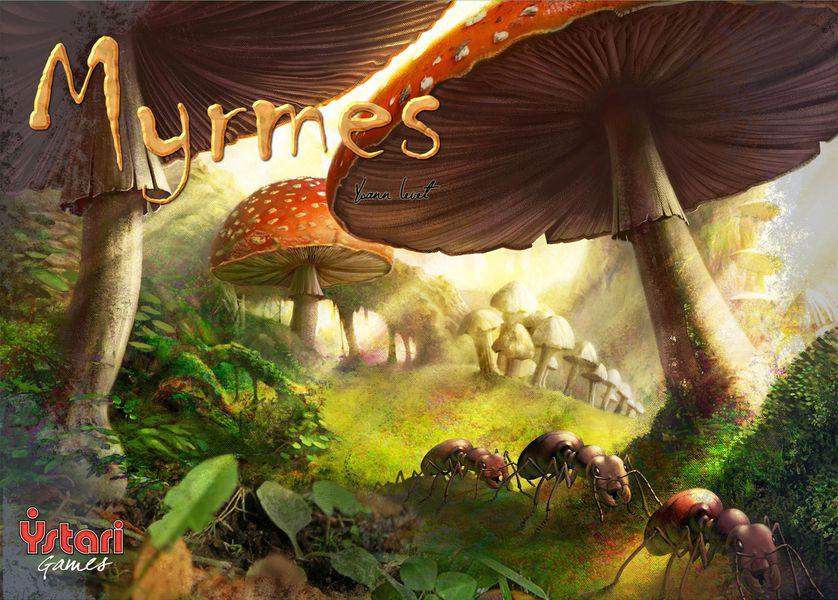
- Scythe. Evocative and realistic illustration. The same can said for the game's cards.
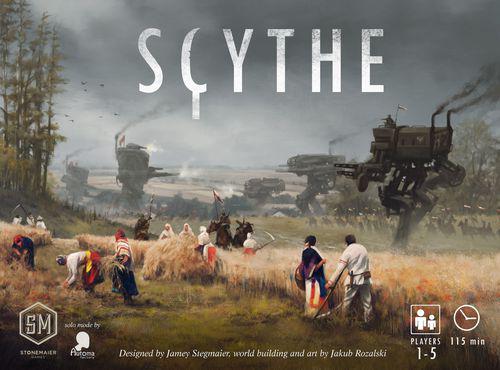
- Cargo Noir. Days of Wonder games all have beautiful covers. The one for Cargo Noir is my favorite. The boards inside are just as well illustrated, in the same style.
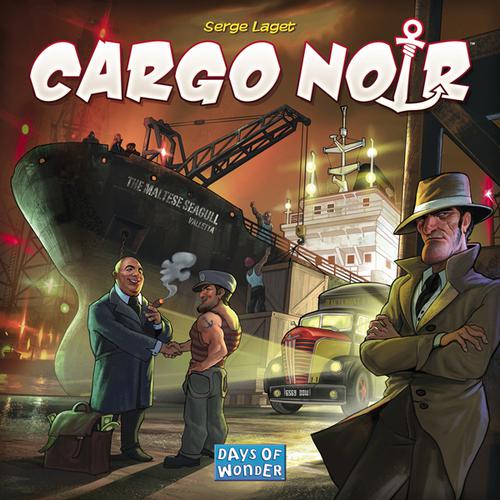
- Deadwood. Just to show that art of this kind can also be found in games by other publishers.
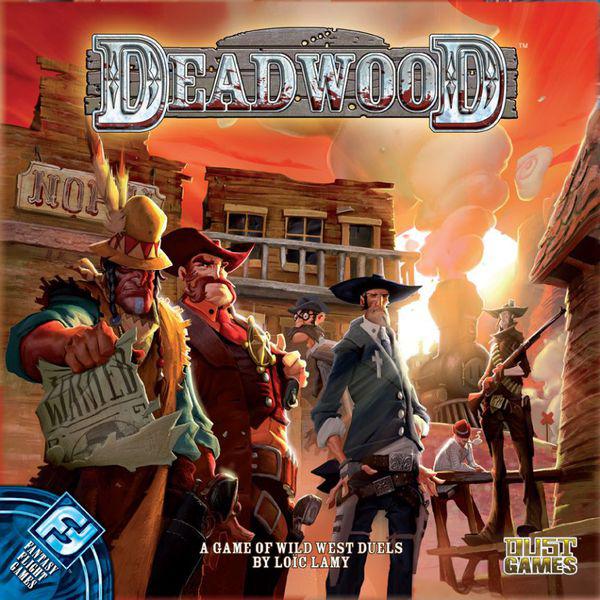
- Camel Up. I like the various expressions on the camels' face.
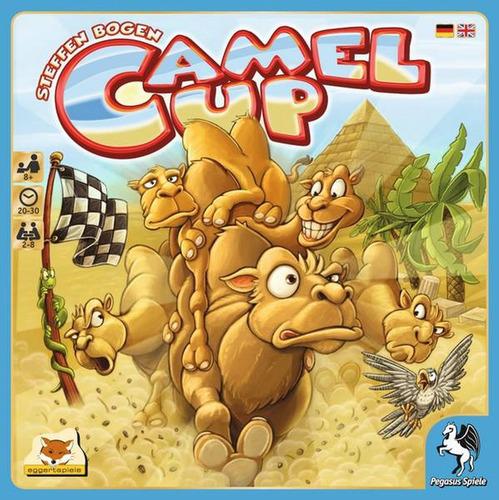
- Through the Desert. Or maybe I just have a weakness for camels...
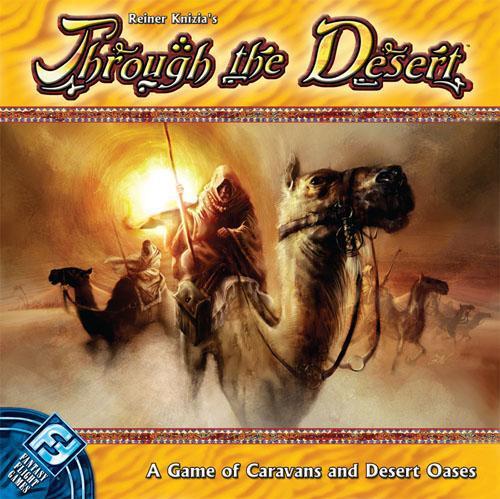
- Flash Point. Dynamic image. The illustrations on the character cards inside are also very nice.
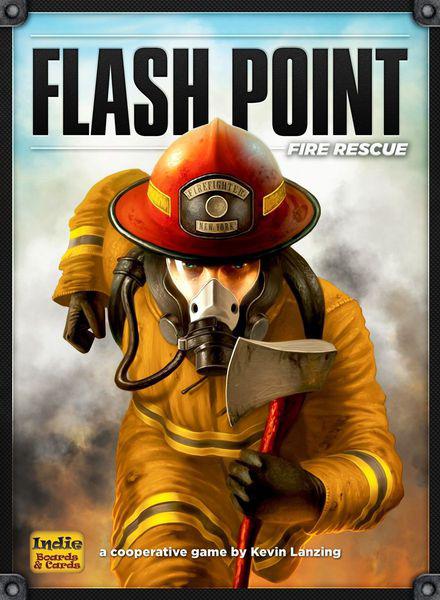
- Rattus. There's a box cover that drew my biologist's attention.
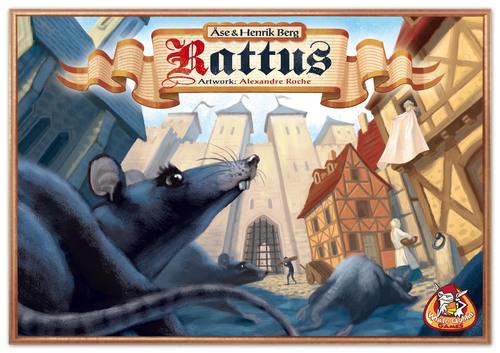
- Cash & Guns. A fun cover.
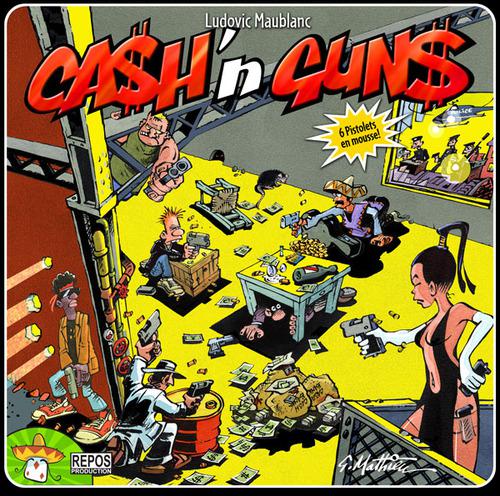
- Hey that's my fish. Another fun cover.
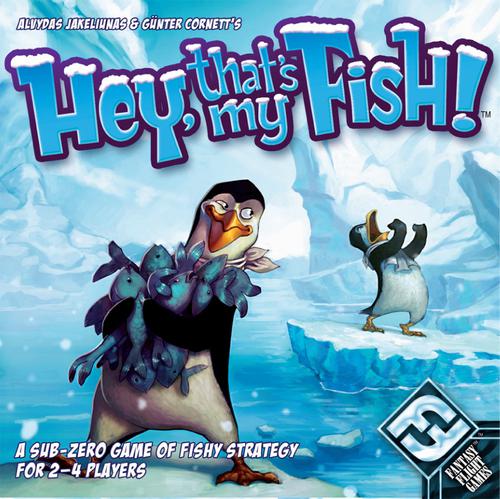
Honourable mentions:
Start of page 
|
 updated on December, 2018
updated on December, 2018










